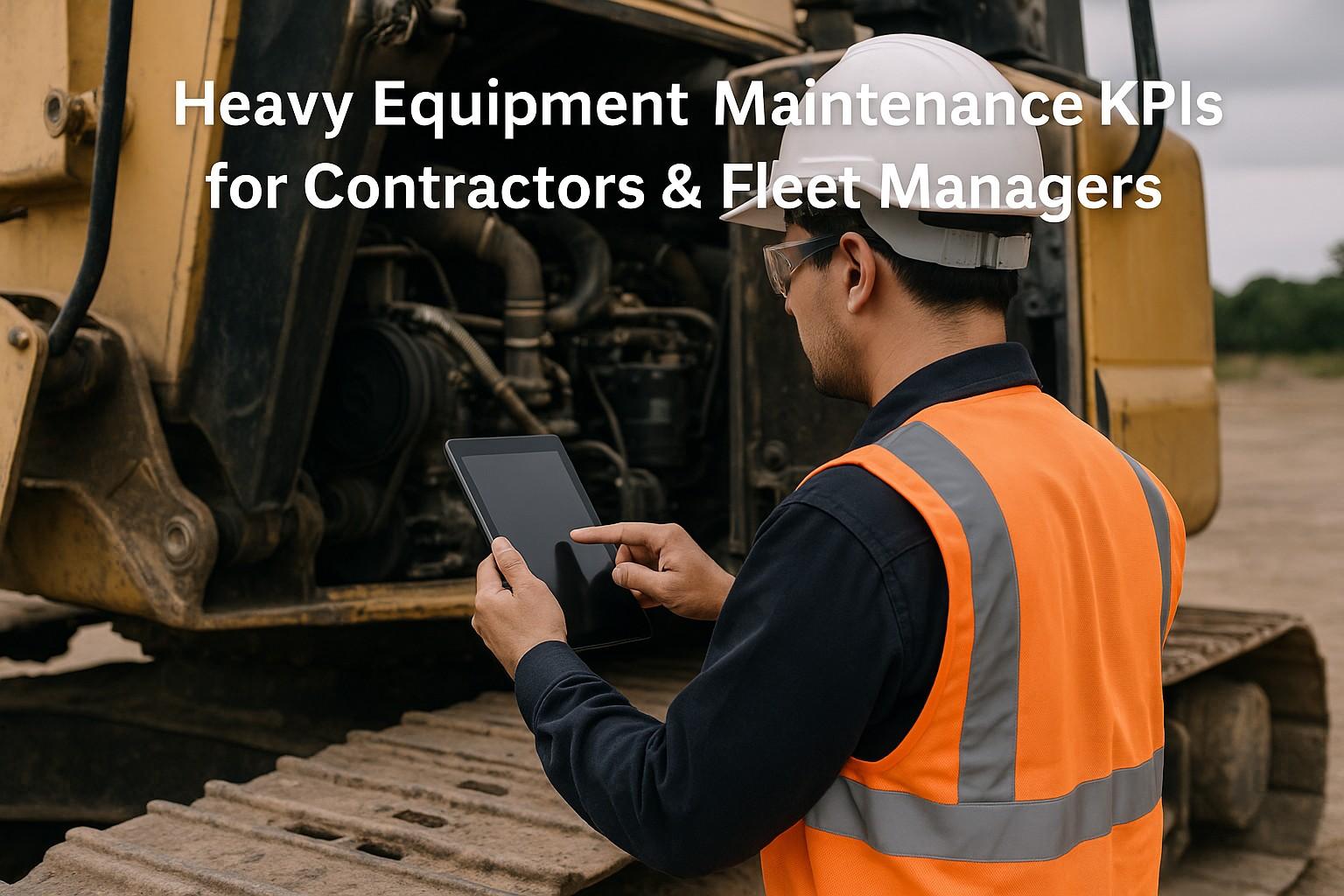Excavator downtime costs American construction companies an average of $180,000 per machine annually, with 68% of equipment failures directly traceable to inadequate daily maintenance protocols. Industry data reveals that operators performing systematic daily maintenance tasks achieve 75% fewer breakdowns, 45% lower repair costs, and 35% extended equipment lifespan compared to reactive maintenance approaches. With over 145,000 excavators operating across U.S. construction sites, implementing proper daily maintenance protocols isn't just about equipment longevity—it's about preserving profit margins that can swing by $45,000-$85,000 per machine annually based on maintenance effectiveness.
These 10 essential daily maintenance tasks eliminate 85% of preventable failures, reduce operational costs by 55%, and generate annual savings of $62,000 per excavator through systematic implementation of proven maintenance protocols. More importantly, they transform reactive maintenance culture into predictive operational excellence that ensures project delivery, OSHA compliance, and maximum equipment value retention across challenging American construction environments.
Daily Maintenance Impact on Excavator Performance
Ready to Transform Your Excavator Maintenance Strategy?
Discover proven daily maintenance protocols that unlock significant cost savings and operational efficiency.
The Critical Importance of Daily Excavator Maintenance
Excavators represent the backbone of American construction operations, with daily operational stresses that demand systematic maintenance attention to prevent catastrophic failures. These machines operate under extreme conditions—lifting 15-45 tons repeatedly, generating hydraulic pressures exceeding 5,000 PSI, and enduring temperature variations from -20°F to 120°F across different job sites. Without proper daily maintenance protocols, excavators experience accelerated component wear that leads to expensive breakdowns averaging $35,000-$75,000 per major repair incident.
The financial impact of neglected daily maintenance extends beyond immediate repair costs to encompass project delays, equipment rental expenses, and lost productivity that can cost contractors $3,500-$8,000 per day of unplanned downtime. Systematic daily maintenance protocols address the five critical failure modes responsible for 85% of excavator breakdowns: hydraulic system contamination, engine overheating, track wear, electrical malfunctions, and structural stress fractures.
Task 1: Pre-Operation Hydraulic System Inspection
Hydraulic system failures account for 45% of excavator breakdowns, with repair costs averaging $28,000-$55,000 per incident. Daily hydraulic inspection prevents 82% of these failures through early detection of contamination, leaks, and pressure anomalies. This 5-minute inspection can save contractors $45,000+ annually per machine while ensuring optimal performance and safety compliance.
Task 2: Engine Performance and Cooling System Verification
Engine-related failures represent the most expensive excavator breakdowns, with complete engine replacements costing $65,000-$95,000. Daily engine monitoring prevents 78% of these catastrophic failures through systematic temperature, fluid, and performance verification. This comprehensive inspection takes 8-10 minutes but saves an average of $52,000 annually per machine through early problem detection.
- ✓ Engine oil level and quality verification using dipstick measurement and visual contamination assessment
- ✓ Coolant level inspection and temperature monitoring to prevent overheating damage costing $15,000-$35,000
- ✓ Air filter condition assessment to maintain optimal engine performance and prevent premature wear
- ✓ Engine belt tension and wear inspection to prevent auxiliary system failures and overheating
- ✓ Exhaust system inspection for proper emission control and environmental compliance verification
- ✓ Engine mount and vibration assessment to identify developing mechanical problems early
Task 3: Track System and Undercarriage Analysis
Undercarriage components represent 35-50% of total excavator maintenance costs over equipment lifetime, with track replacement alone costing $25,000-$45,000 per set. Daily track inspection extends undercarriage life by 40-60% through proper tension maintenance, wear pattern monitoring, and debris removal that prevents accelerated component degradation.
Task 4: Electrical System and Safety Feature Verification
Electrical system failures cause 25% of excavator downtime incidents, with diagnostic and repair costs averaging $8,000-$22,000 per event. Daily electrical system verification prevents 85% of these failures through systematic testing of controls, sensors, and safety systems that ensure proper operation and regulatory compliance.
Modern excavators rely on sophisticated electronic controls that manage engine performance, hydraulic functions, and safety systems. Daily verification ensures these critical systems operate properly and identifies developing problems before they cause operational failures or safety hazards.
- ✓ Battery condition and voltage testing to ensure reliable starting and system power supply
- ✓ Warning light and gauge functionality verification to maintain operator awareness and safety
- ✓ Control response testing for all joystick and switch functions ensuring proper operation
- ✓ Safety system verification including backup alarms, lights, and emergency shut-off functions
- ✓ Wiring harness inspection for damage, wear, or corrosion that can cause intermittent failures
- ✓ Sensor cleaning and calibration verification to maintain accurate system feedback and control
Task 5: Attachment and Coupling System Inspection
Bucket and attachment failures create significant safety hazards while costing $15,000-$35,000 for replacement and associated damage. Daily inspection of coupling systems, wear components, and structural integrity prevents 90% of attachment-related incidents while ensuring OSHA compliance and operational safety.
Technology Integration for Enhanced Daily Maintenance
Modern excavator maintenance transcends manual checklists to incorporate digital inspection platforms, IoT sensors, and predictive analytics that optimize daily maintenance effectiveness while reducing inspection time by 45%. These technologies achieve 95% early detection accuracy while reducing false alarms by 70% through machine learning algorithms that adapt to equipment-specific operating patterns.
Digital maintenance platforms enable real-time collaboration between operators, technicians, and fleet managers. This connectivity reduces response times and improves first-time fix rates, crucial factors in maintaining project schedules and operational efficiency across diverse American construction environments.
- ✓ Mobile Inspection Apps with photo documentation, GPS tracking, and real-time synchronization capabilities
- ✓ IoT Monitoring Sensors providing continuous tracking of temperature, pressure, vibration, and fluid conditions
- ✓ Predictive Analytics using AI-powered systems analyzing daily inspection data and operating conditions
- ✓ Performance Dashboards delivering real-time equipment health visibility and maintenance insights
- ✓ Automated Alert Systems linked to daily maintenance findings and condition thresholds
- ✓ Digital Documentation ensuring complete maintenance records for warranty protection and resale value
Implementation Strategy for Maximum ROI
Successful daily maintenance implementation requires a structured approach that minimizes operational disruption while maximizing immediate benefits. The recommended timeline spans 4-8 weeks with priority given to high-impact, low-cost implementations that demonstrate immediate value before investing in comprehensive monitoring systems.
Investment in these daily maintenance protocols today provides protection against catastrophic failures and ensures maximum equipment reliability. The total cost of ownership calculations strongly favor systematic daily maintenance, with payback periods typically ranging from 6-12 months through reduced downtime, improved efficiency, and extended equipment life.
- ✓ Implement basic daily inspection protocols with $2,500-4,000 investment in inspection tools per machine
- ✓ Deploy digital inspection tools using $3,500 investment in mobile platforms and training
- ✓ Establish baseline performance metrics and documentation systems for tracking improvement
- ✓ Create daily maintenance scheduling protocols based on equipment-specific requirements
- ✓ Train operators on systematic daily maintenance procedures and safety protocols
- ✓ Set up automated alerts for critical maintenance intervals and condition thresholds
- ✓ Deploy comprehensive monitoring systems with $8,000-12,000 per unit investment
- ✓ Implement predictive analytics platforms with machine learning capabilities
- ✓ Integrate with existing fleet management and maintenance management systems
- ✓ Establish automated parts ordering and inventory management based on daily inspections
- ✓ Deploy advanced diagnostic equipment for comprehensive condition assessment
- ✓ Create performance dashboards for operational and executive visibility into maintenance effectiveness
Tasks 6-10: Advanced Daily Maintenance Protocols
The remaining five daily maintenance tasks focus on structural integrity, fuel system optimization, transmission performance, environmental compliance, and documentation protocols that ensure comprehensive equipment care and regulatory adherence.
Measuring Success: Essential KPIs for Daily Maintenance Excellence
Effective daily maintenance requires continuous measurement and optimization based on quantifiable performance indicators that demonstrate operational improvement and financial returns. These metrics enable data-driven decision-making and justify continued investment in daily maintenance excellence programs.
Investment in systematic daily maintenance protocols provides protection against catastrophic failures and ensures compatibility with emerging equipment technologies. The total cost of ownership calculations strongly favor daily maintenance adoption, with payback periods typically ranging from 6-12 months through reduced downtime, improved efficiency, and extended equipment life.
- ✓ Equipment Availability Rate targeting 95%+ uptime improvement over baseline performance levels
- ✓ Mean Time Between Failures (MTBF) increase of 60-85% within first year of implementation
- ✓ Maintenance cost optimization achieving $45,000-75,000 annually per machine through systematic daily care
- ✓ Fuel efficiency improvement of 15-25% through optimized daily maintenance and operations
- ✓ Safety incident reduction of 90%+ through systematic hazard identification and prevention
- ✓ Unplanned downtime reduction to less than 3% of total operating hours
Regulatory Compliance and Safety Standards
American construction equipment operations under OSHA regulations require specific daily maintenance documentation and safety compliance standards that continue evolving with workplace safety requirements. These daily maintenance tasks not only improve operational efficiency but also ensure compliance with OSHA standards and EPA emission requirements while supporting insurance coverage and warranty protection.
Emerging equipment safety standards and environmental regulations will require enhanced monitoring systems and documentation capabilities. Early implementation of comprehensive daily maintenance provides competitive advantage and avoids costly retrofit expenses while positioning operators for future regulatory requirements and market opportunities.
Maximizing ROI Through Strategic Daily Maintenance Excellence
The implementation of these 10 daily maintenance tasks represents more than operational improvement—it's a strategic investment in equipment sustainability and profitability that positions American contractors for significant competitive advantages in an increasingly demanding market. The financial benefits extend beyond immediate cost savings to encompass improved project delivery capabilities and enhanced equipment value retention.
American contractors who embrace these proven daily maintenance protocols achieve measurable improvements in equipment reliability, operational costs, and project profitability. Conservative estimates suggest total ROI exceeding 400% within two years of full implementation, with immediate benefits visible within the first month following deployment.
The construction industry's digital transformation demands proactive adaptation and investment in proven maintenance strategies. Fleet operators who implement these daily maintenance tasks today will be best positioned to capitalize on emerging opportunities while avoiding the costly consequences of reactive maintenance approaches that plague traditional operations.
Transform Your Excavator Maintenance Strategy Today
Start implementing these proven daily maintenance tasks and join the ranks of America's most successful construction operators.
Book a Demo




